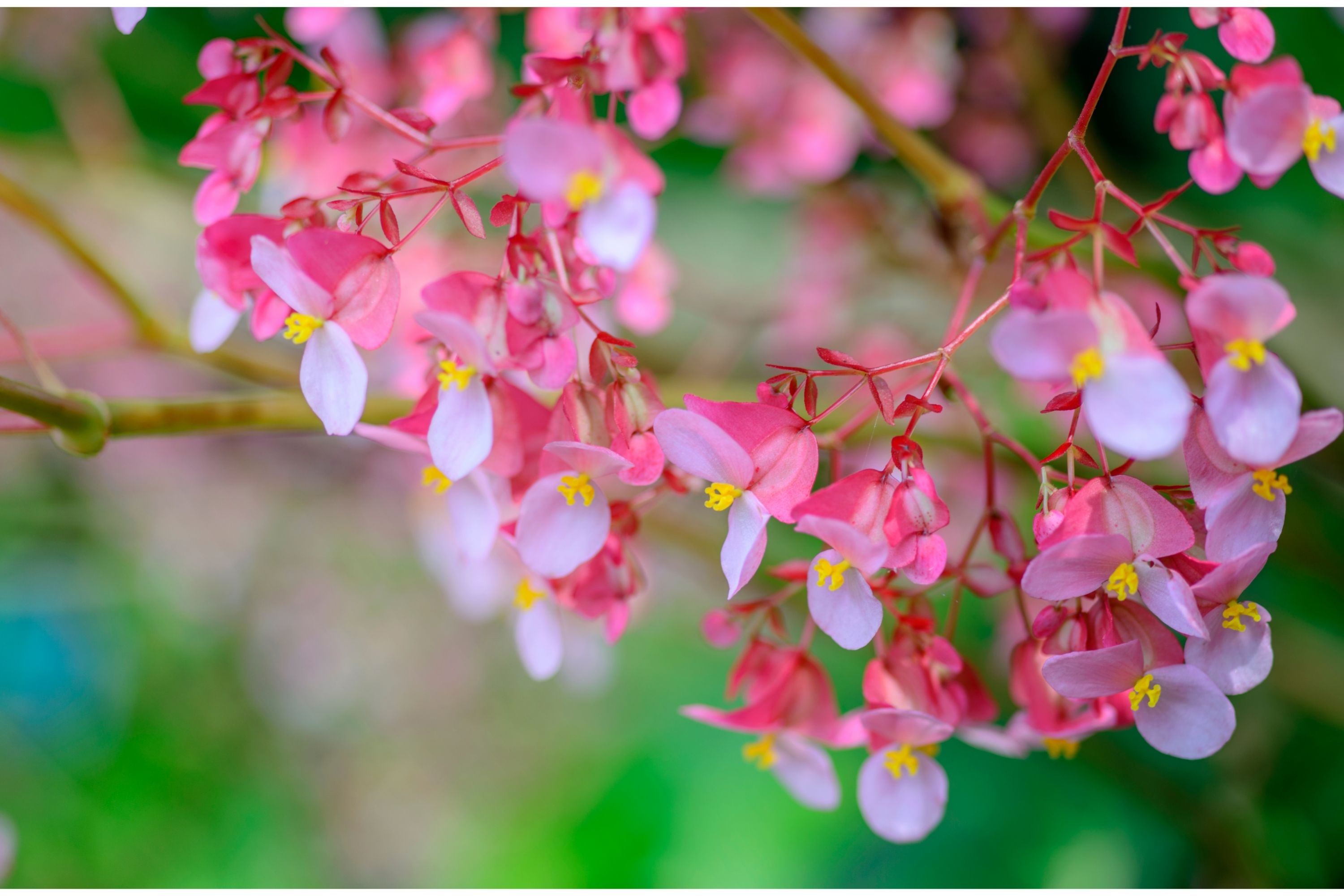Begonia
(Begonia hybrida)

Description
Begonia hybrida, commonly known as Begonia, is a popular ornamental plant that is widely grown for its colorful and attractive foliage and flowers. It is a member of the family Begoniaceae and is native to the tropical regions of South and Central America, Africa, and Asia. The plant is valued for its beauty, durability, and versatility, and is grown both indoors and outdoors. Classification and Description Begonia hybrida is a hybrid plant species that has been developed through the selective breeding of several Begonia species. It is a perennial plant that grows up to 60 cm in height and has a bushy growth habit. The plant has a fibrous root system and a fleshy stem that can be either upright or creeping. The leaves of the plant are asymmetrical and vary in size and shape, depending on the cultivar. They can be round, oval, or oblong, and may be smooth or serrated along the edges. The leaves are typically green, but may be variegated with shades of red, pink, white, or silver. Begonia hybrida produces small, delicate flowers that are borne in clusters on upright stems. The flowers are bisexual and come in a wide range of colors, including red, pink, white, yellow, orange, and purple. The petals of the flowers are typically waxy and may be fringed or ruffled. The flowers are followed by small, dry, and winged capsules that contain tiny seeds. Cultivation Begonia hybrida is a versatile plant that can be grown both indoors and outdoors. It prefers a well-draining soil that is rich in organic matter, and requires regular watering to keep the soil moist. The plant should be fertilized regularly with a balanced fertilizer during the growing season to promote healthy growth and flowering. Indoor cultivation Begonia hybrida is an excellent indoor plant that can be grown in pots or hanging baskets. The plant requires bright, indirect light and should be kept away from direct sunlight, which can scorch the leaves. It also prefers a humid environment and should be misted regularly to prevent the leaves from drying out. Indoor-grown Begonia hybrida should be watered when the top layer of soil feels dry to the touch. Outdoor cultivation Begonia hybrida is a popular garden plant that can be grown in borders, containers, or hanging baskets. The plant prefers partial shade to full shade and should be protected from direct sunlight, which can cause the leaves to wilt and burn. It also requires regular watering to keep the soil moist and should be fertilized every two weeks during the growing season. Propagation Begonia hybrida can be propagated through stem cuttings or by dividing the plant. Stem cuttings should be taken from healthy plants in the spring or summer and should be rooted in a well-draining soil mix. The cuttings should be kept in a warm and humid environment until they root and start to grow. Dividing the plant is another method of propagation that can be done in the spring or fall. The plant should be carefully removed from its container or garden bed and the root ball should be divided into several smaller sections. Each section should have several stems and roots, and should be replanted in a well-draining soil mix. Pests and Diseases Begonia hybrida is susceptible to a variety of pests and diseases that can damage the plant and reduce its vigor. Common pests include aphids, mealybugs, spider mites, and thrips, which can be controlled through the use of insecticidal soap or neem oil. Diseases that can affect the plant include powdery mildew, botrytis blight, and bacterial leaf spot
Taxonomic tree:







